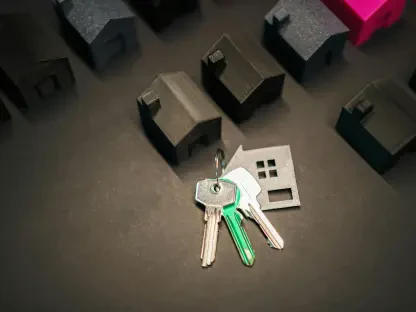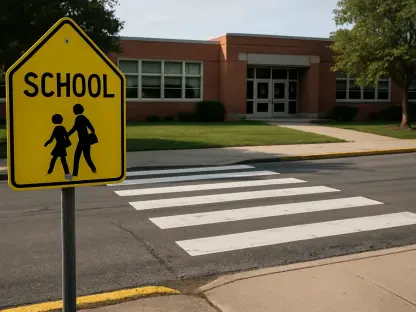One of the biggest trends to remain after the COVID-19 pandemic is an interest in hybrid schooling. Not entirely satisfied with homeschooling or convinced that traditional schools are safe and practical, parents and students are exploring the idea of hybrid schools.
A 2024 poll revealed that parents are searching for new K-12 school options for their kids, with the data revealing that 72% of parents are considering, 63% are searching for, and 44% have selected new schools over the past few years.
While this alone isn’t intriguing, what has caught the attention of leaders in education is the shift toward and preference for hybrid schools. In another survey of parents’ sentiments toward K-12 schools, 49% of parents indicated a preference for their children to learn from home at least once a week. Another 10% are looking for full-time homeschooling, while 39% would like their child at home at least one to four times a week. To solidify the data, 64% reported that they’re looking for a hybrid school.
Parents are looking for new options; here’s why the hybrid model is a top contender:
The College-Simulated Learning for K-12
The hybrid school model already exists. Parents opting for a split between on-campus and at-home education follow the College-Simulated Learning for K-12 (CSL) model, also referred to as the University Model. This model requires a hands-on approach from parents, learners, and teachers; schools provide the curricula, allocate educators, and assessments for all subjects, while parents are required to facilitate learning during home days. In this model, every subject has in-person and at-home components, which rely heavily on parental involvement.
One of the biggest challenges with this model is that there are simply not enough schools to meet the current demand of the 39% of parents looking for this approach. It thus falls on entrepreneurs in the education sector to seize the opportunity and launch alternative schools and delivery models.
This model is gaining traction within private schools thanks to the expansion of education savings accounts, private school scholarships, and tax credits. Additionally, 11 states have legislated some version of a universal school choice bill, providing room for the demand for hybrid schools and creating the financial instruments that give parents breathing room to pay for these establishments.
Hybrid Schools for the Public Sector
There’s an upside in the public school system as well. Charter and district schools have the potential to use the hybrid model and reap the benefits of increased parental involvement. School facilities and personnel would potentially be able to serve twice as many students as most learners would only be in school twice or thrice a week. This could have an extreme impact on taxpayers, who would be saving enormously.
A big question is how feasible this would be for a public school, considering the limited resources and enormous transformation required. For advocates of this program, a pilot program is the answer. Currently, the scenario being put forward to the government is to start with one school and just one grade; preferably kindergarten, and to expand the program by one grade a year to cater to those students. For charter schools, they’ve suggested either launching the model one grade at a time at an existing school or starting a new charter school exclusively using the hybrid model.
The Future of Schooling in America
The CSL approach to learning is seen by some as the future American education administrators should aspire to. Studies show enormous benefits to educators, teachers, families, and students.
Students develop strong, independent study and time management skills, entering tertiary institutions better prepared for the demands and challenges. Parents and guardians are better able to oversee learner development. Schools across the country are understaffed, and teachers are overwhelmed, overworked, and underpaid. This model offers a solution to a number of these challenges.
The model is beneficial in both the private and public sectors but is expected to gain traction in the private sector due to flexibility in state laws. There are, however, valid criticisms of how difficult this will be to implement, considering the number of legislative changes that need to be made. To detractors, champions of the CSL approach would point to the gains made in recent years that have lowered the hurdles to parents wanting more options for education.
Lobby groups have been formed to tackle this issue, laying the groundwork for change. For parents and guardians, work-from-home and flexible hour arrangements have been a game changer, allowing for additional hours to be spent with children and invested in learning. The overall results on whether flexibility and work-from-home have been a resource drain or gain for family time is still inconclusive. This is mainly because data from COVID-19 has had to consider parent or child illness, the steep adjustment period, and various factors like socio-economics, gender roles at home, and other environmental factors.
What this model doesn’t take into account is low-income earners and how they would be affected. Studies show that one in five schoolchildren in the US has inconsistent and inadequate access to nutritious meals. There’s also the argument that, for many students, school is the safest place to be. There are a number of socioeconomic factors that haven’t been expressly discussed in the argument for the CSL model other than by saying, “It’s not for everyone.”
Still, those who support the CSL have found balance in these new systems and advocate for the benefits of a flexible lifestyle, particularly as it pertains to increased family time.
Concluding Thoughts
Students adapted to the online learning environment introduced during the COVID-19 pandemic and have continued to thrive under a hybrid model. The College-Simulated Learning for K-12 program is an existing approach to learning and teaching that centers around academic excellence, character development, and family involvement.
A supervising adult is required for at-home learning days, and parents are encouraged to be actively involved for the hybrid model to be a success. With parents and guardians increasingly working from home or offered a degree of flexibility in their working hours, this is becoming a feasible option for more families.
Parents, when given the opportunity, are looking for options that give them more time to spend with their families. They want to play an active role, not a solo role, in their children’s education and need a flexible solution that enhances the learner’s strengths, recognizes their uniqueness, and improves their weaknesses.
Times are changing, and this is reflected in parents’ outlooks and attitudes toward education. They’re looking for new school options, and hybrid schools are emerging as a top contender to meet the needs of students, parents, and teachers.









